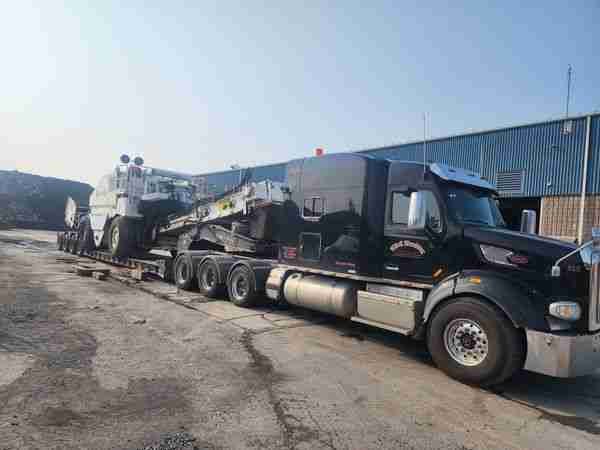[ad_1]

Transportation laws play a vital function in making certain security, effectivity, and equity within the motion of products and folks. For companies concerned in transportation, staying compliant with these laws is crucial to keep away from authorized points, fines, and operational disruptions. Right here’s an summary of key transportation laws and sensible recommendation on learn how to navigate and adjust to them successfully.
1. Understanding Key Transportation Laws
- Federal Motor Provider Security Administration (FMCSA) Laws The FMCSA units laws for industrial autos working in america. Key areas embody:
- Hours of Service (HOS): Guidelines governing the utmost variety of hours drivers can function and the required relaxation durations. These laws intention to forestall driver fatigue and improve street security.
- Automobile Upkeep: Necessities for normal car inspections, upkeep, and repairs to make sure autos are in secure working situation.
- Driver {Qualifications}: Requirements for driver licensing, together with medical examinations and background checks to make sure drivers meet security and competency necessities.
- Environmental Laws Laws aimed toward lowering the environmental affect of transportation embody:
- Emission Requirements: Laws set by the Environmental Safety Company (EPA) that restrict the quantity of pollution that autos can emit. These requirements fluctuate by car kind and should require the usage of cleaner fuels or applied sciences.
- Gasoline Effectivity Requirements: Necessities to enhance gas financial system, which may affect car choice and operational practices.
- Customs and Border Safety (CBP) Laws For companies concerned in worldwide transport, compliance with CBP laws is vital:
- Import and Export Compliance: Adhering to guidelines associated to the documentation, classification, and valuation of products crossing worldwide borders. This consists of correct customs declarations and fee of duties and taxes.
- Commerce Agreements: Understanding and making use of the provisions of commerce agreements that will affect tariffs and import/export restrictions.
- Hazardous Supplies Laws Companies dealing with or transporting hazardous supplies should adjust to:
- Division of Transportation (DOT) Laws: Guidelines governing the secure transportation of hazardous supplies, together with correct labeling, packaging, and documentation.
- Emergency Response Necessities: Protocols for responding to spills or accidents involving hazardous supplies, together with coaching and emergency contact data.
2. Sensible Recommendation for Staying Up-to-Date
- Commonly Evaluation Regulatory Updates Transportation laws can change ceaselessly. To remain knowledgeable:
- Subscribe to Updates: Join newsletters or alerts from related regulatory companies, such because the FMCSA, EPA, or DOT. These sources present well timed data on new laws and amendments.
- Be part of Trade Associations: Take part in trade teams and associations that provide insights into regulatory adjustments and finest practices.
- Implement Compliance Administration Techniques Establishing sturdy compliance administration methods can streamline adherence to laws:
- Develop Insurance policies and Procedures: Create detailed insurance policies and procedures that define how what you are promoting will adjust to laws. Be certain that these are repeatedly reviewed and up to date.
- Put money into Expertise: Make the most of compliance administration software program to trace regulatory necessities, handle documentation, and monitor adherence. Expertise might help automate compliance processes and scale back the danger of errors.
- Prepare Your Workforce Schooling and coaching are important for making certain that every one workers perceive and cling to transportation laws:
- Conduct Common Coaching: Present ongoing coaching for drivers, logistics personnel, and administrative employees on regulatory necessities and compliance procedures.
- Keep Information: Preserve detailed data of coaching periods, certifications, and compliance actions. This may be helpful for audits and inspections.
- Conduct Inside Audits and Critiques Common inside audits might help establish and tackle potential compliance points earlier than they change into main issues:
- Carry out Self-Inspections: Commonly evaluate your operations to make sure they align with regulatory necessities. This consists of checking car upkeep data, driver logs, and transport documentation.
- Have interaction Exterior Auditors: Contemplate hiring exterior auditors to conduct complete compliance critiques and supply goal assessments of your practices.
- Seek the advice of with Authorized and Compliance Specialists Navigating advanced laws might be difficult. Searching for skilled recommendation can present invaluable help:
- Authorized Counsel: Seek the advice of with authorized specialists who specialise in transportation legislation to make sure that what you are promoting is totally compliant with all relevant laws.
- Compliance Consultants: Have interaction with compliance consultants who can provide tailor-made steerage and assist implement finest practices for assembly regulatory necessities.
Navigating transportation laws requires diligence, consciousness, and proactive administration. By understanding key laws, staying knowledgeable about updates, and implementing efficient compliance methods, companies can keep away from authorized points, guarantee easy operations, and preserve a robust fame within the trade.
Whether or not coping with FMCSA guidelines, environmental requirements, customs laws, or hazardous supplies necessities, a complete method to compliance is crucial. Investing in coaching, expertise, and professional recommendation is not going to solely assist in assembly regulatory calls for but in addition contribute to the general effectivity and success of your transportation operations.
Contact us right now for Free Delivery Estimates and heavy hauling trucking data. We welcome any questions, considerations, or feedback you will have.

Feedback are closed.
[ad_2]
Source_link

